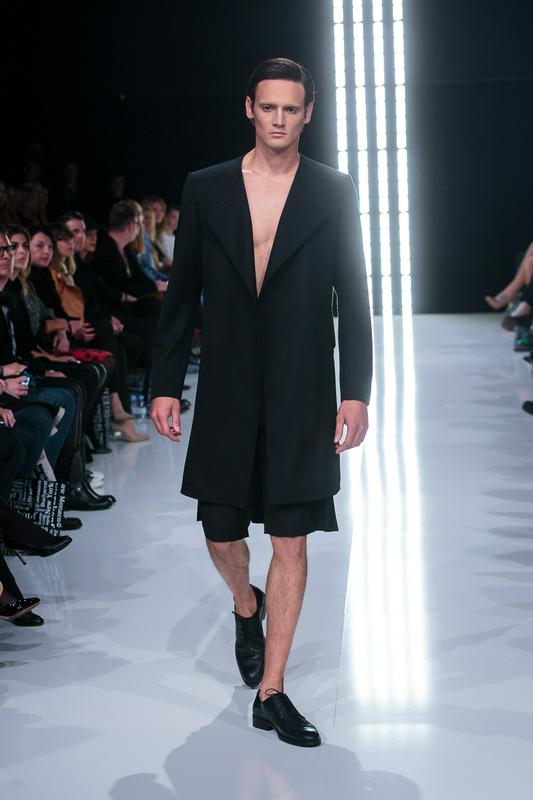
Lea Pisani is the author of the bestselling first Slovenian handbook on clothing, entitled Obleka – kaj, kdaj, kako, which translates into its English version as Dress Code for All Occasions, published recently at Amazon.com. She holds a university degree in textile and clothing design. She specialised in London, obtaining the title of CMB Image Consultant. Ms Pisani provides education and consultation in Slovenia, Italy and Austria. She has been working as an image consultant for sixteen years. Among other things, she has designed the programme entitled Modni stilizem in Sodobna moda (Fashionable Styles and Contemporary Fashion) at the Academy of Design; she also gives lectures at the Higher Vocational College for Catering and Tourism in Maribor. She is the creator of the new visual identity of the Ljubljana city wardens and the overall visual identity of the wardens of Slovenia. Working with acclaimed Slovenian costume designer Alan Hranitelj, Lea Pisani has also carried out several business attire projects (the visual identity of the Žale cemetry, the Slovenian Tourist Board and public transport provider Ljubljanski Potniški Promet, d.d.).
Slovenians do not tend to wear daring clothing with bold prints, patterns and colours like the Italians, though they do admire their creative choices in dressing. Without doubt, Slovenians value aesthetics more than Americans and are more careful about quality in comparison with the English. Our Slovenian textile companies have taught us to recognise good quality and we regret that there are hardly any left. Thus we are increasingly reaching out to foreign brands. There are many connoisseurs of clothing culture among Slovenians, who appreciate designed pieces defining their style of dressing. Quite a few of them follow the fashion trends, but it is true to say that the city where we can see the most fashionably dressed men is Ljubljana, followed by Koper, the latter because of its proximity to Italy.
As an image consultant, I have fought for years against wearing short-sleeved collared shirts, trying to make people understand that such a shirt is basically a "ruined" shirt with its sleeves cut off. And when such a shirt comes with a tie, a great aesthetic sin has been committed. Such a combination is allowed only for those wearing a uniform. In the summer, Slovenia and also other parts of Europe see men wearing three-quarter cargo pants with a pair of crocs, exposing some 20 cm of hairy legs. Some men just prefer to stay in their comfort zone and are not concerned with the aesthetic value of certain combinations of clothing and accessories.
Those who are acquainted with clothing culture are also generally connoisseurs of various brands, and there is no longer any need to shop abroad as such brands are now readily available in Slovenia. Young Slovenians surprisingly often shop online, because there is no need to enter sweaty fitting rooms, which is undoubtedly one of the main reasons why they, unlike women, do not particularly like the shops.
And what did Slovenians wear to the basketball games? If possible, a green T-shirt with stripes that represent Triglav, our highest mountain. As a rule, we wear comfortable clothing to sports matches: jeans, linen trousers, Bermuda shorts, polo shirts or T-shirts featuring messages are an excellent choice. Spectators at sports games should not really wear sportswear (such as tracksuits), since such clothing is only worn when we are actively engaged in sports activities.
In their rational choice of clothes, our men can, in general, set an example to Slovenian women, who have in their wardrobes as much as 70 percent of clothing they never wear – hence a very common comment here is "How come you have nothing to wear when your wardrobe’s full of clothes?". Men prefer to buy clothes in sets, when they need something, and rarely during the sales. Men hate the crowds during the sales, though crowds at sporting events do not seem to bother them at all.
Lea Pisani, Image Consultant, SINFO
Lea Pisani is the author of the bestselling first Slovenian handbook on clothing, entitled Obleka – kaj, kdaj, kako, which translates into its English version as Dress Code for All Occasions, published recently at Amazon.com. She holds a university degree in textile and clothing design. She specialised in London, obtaining the title of CMB Image Consultant. Ms Pisani provides education and consultation in Slovenia, Italy and Austria. She has been working as an image consultant for sixteen years. Among other things, she has designed the programme entitled Modni stilizem in Sodobna moda (Fashionable Styles and Contemporary Fashion) at the Academy of Design; she also gives lectures at the Higher Vocational College for Catering and Tourism in Maribor. She is the creator of the new visual identity of the Ljubljana city wardens and the overall visual identity of the wardens of Slovenia. Working with acclaimed Slovenian costume designer Alan Hranitelj, Lea Pisani has also carried out several business attire projects (the visual identity of the Žale cemetry, the Slovenian Tourist Board and public transport provider Ljubljanski Potniški Promet, d.d.).

































































